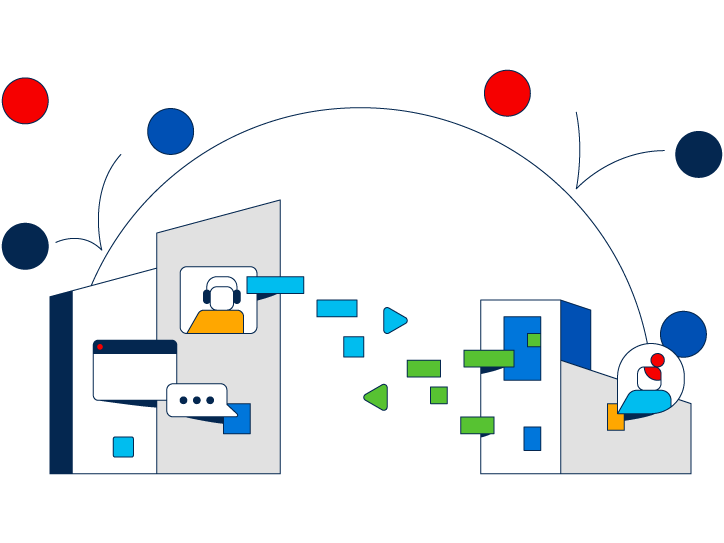What are cybersecurity solutions?
Security teams need to have visibility across everything they protect: email, web, endpoints, clouds, and networks. Such visibility is difficult with disjointed, poorly integrated tools. To secure applications and workloads in a complex environment, cybersecurity solutions should work together. Only then can they fully defend against the various ways cyberthreats can infiltrate and threaten an organization.
Security service edge (SSE)
Security service edge (SSE): Cisco Secure Access
SSE solutions help organizations provide secure connectivity for hybrid workforces, while protecting corporate resources from cyberattacks and data loss. This platform unifies multiple security functions into a single cloud-delivered service to protect users and infrastructure from threats.
Cisco Secure Access is an SSE solution that delivers an optimal universal experience for users, greatly simplifies IT operations, and helps ensure security for everyone.
Read about Cisco Secure Access
Extended detection and response (XDR)
XDR is a unified threat detection, investigation, mitigation, and hunting solution that integrates the entire Cisco security portfolio and select third-party tools across endpoints, email, network, and cloud, backed by actionable threat intelligence. Detect and respond to the most sophisticated threats and ransomware with correlated cross-domain telemetry and AI/ML-driven enrichment to significantly accelerate incident response.
Read more about XDR
Secure access service edge (SASE)
SASE is a network architecture that combines network and cloud-delivered security technologies into a single cloud service. Core functions include Cloud Access Security Broker (CASB), secure web gateway (SWG), zero trust network access (ZTNA), and software-defined WAN (SD-WAN).
Read more about SASE
Malware protection
Malware detection is a type of cybersecurity software designed to track unknown files, block known malicious files, and prevent the execution of malware on endpoints and network appliances. It can also help isolate, investigate, and repair infected endpoints for the 1% of attacks that still get through the strongest defenses.
Read more about malware protection
Malware analytics
Cisco Secure Malware Analytics combines advanced sandboxing with threat intelligence into one unified solution to protect organizations from malware. With a robust, context-rich malware knowledge base, you'll understand the malware threat, how serious it is, and how to defend against it.
Trusted access
Trusted access solutions support zero trust principles by constantly verifying user and device identity, device posture, vulnerabilities, and indicators of compromise. Risk-based authentication, which uses contextual information to assess the risk of a login, is a critical component of authentication. Cisco software verifies user trust at every point.
Cloud security
Cisco Umbrella uses web scanning at an Avigilon Control Center (ACC) gateway to block users from connecting to known and suspected malicious domains, IPs, and URLs, whether they're on or off your network. This can help prevent people from inadvertently allowing malware to access the network and can stop malware from connecting back out to a command and control (C2) server.
